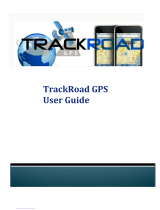
Getting Started
Your Livewire GPS Vehicle Tracker is usually activated within 24 hours of
the item being received by you, and you should have received an email
containing your default login information. If you did not receive your login
information, please contact our support team at 800-654-7966 or by email at
techsupport@brickhousesecurity.com.
Installation of the Livewire is similar to that of a car stereo. If you are not
confident of your ability to install the device, we suggest that you contact a
local car stereo/alarm installer. The Livewire is powered by your vehicle; to
install the device in your vehicle, connect the wiring harness to the base unit
as indicated in the diagram above. Once that’s done, connect the Red wire
to the vehicle’s power. Connect the Black wire to Ground. Connect the White
wire to the vehicle’s ignition or accessory power.
The Livewire features both an internal and an external antenna for improved
signal strength and easier installation. The external antenna on the device
is very sensitive; install the unit in the dash of the vehicle with the top facing
up with as little metallic obstruction as possible. Because of differences in
























